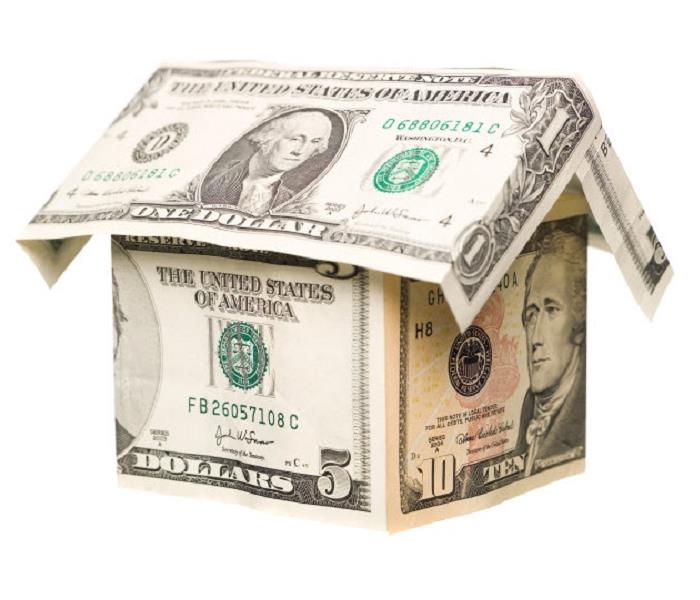Protect Your Home No Matter What Insurance Coverage You Have
4/28/2014 (Permalink)
With or without insurance there is a lot you can do to protect your home.
The following tips and safety measures should serve you well when you are concerned about minimizing the risk of suffering from damages, injuries or theft of personal items.
Home protection against water damage
Make sure that outbuildings are properly secured.
Any items located outside should either be brought inside or be also properly secured.Any object of value should be moved to a place where there is no possible flooding.Safeguard your home's climate and electrical systems by raising circuit breakers, switches, wirings and sockets to a minimum of twelve inches above the estimated flood level in the area.Make modifications on water heaters, furnace and other equipment found indoors so it is above the flood level.Modifications should also be done to air-conditioning units, electrical power units and fuel tanks, so that these are above the flood level.Install backflow valves on the home's sewer system so that sewage will not seep back inside the house in case of flooding.For homes that are located in areas that are frequently flooded, the options are:Raising the home to above flood level with the use of columns or piers.Wet proofing the home with the use of vents in its foundation that would direct flood water through or around the building.Dry proofing the home with the application of sealing or coating materials that keep out floodwater Home protection tips against strong winds
Install storm panels and hurricane shutters in windows.
Install braces, hurricane straps in roofs. Also, ensure proper installation of plywood sheathing.Strengthen garage doors.Shut off propane tanks.Have your doors properly reinforced with bolt kits installed in both their top and bottom sections.Consider building a storm shelter in your basement. A storm shelter serves to protect occupants of a home during severe storms and tornadoes. Get the help of a professional when building your storm shelter. A good storm shelter should bear the following features:It has to be anchored well to prevent uplift and being overturned.Its ceiling, door and walls has to be strong to enough to resist falling or flying debris and these must be capable of withstanding strong wind pressure.It has to be stocked with food and medical supplies that will allow its occupants to survive a minimum of three days.It has to have its own stand by power. Home protection tips to prevent burglaries
Living room tips:
Make sure that extension, lamp, phone and other cords do not get in the way of people.
Passageways should be clutter free.Runners and rugs should be secured in place.Furniture and curtains should have a distance of at least one foot from baseboard heaters.Ensure that the fireplace has a screen for catching sparks.Make sure that your chimney undergoes regular inspection and cleaning each year.Have your furnace serviced regularly each year. Kitchen tips:
Make sure that hand, paper towels, curtains and similar objects be kept away from the oven or from burners.
Always check that stove counters and tops are grease free.Microwave, toaster, coffeemaker and other kitchen appliances should be plugged into separate electrical outlets. Bedroom tips
Install a carbon monoxide detector nearby bedrooms.
Have a phone near your bed.Have a lamp near your bed.Bathroom tips
Install a nonskid mat in your shower or bathtub.Install a grab bar in your shower or bathtub.Make sure that the maximum hot water temperature is 120 degreesTips for other areas in the home
Install outdoor lights in entrances.Walkways should be free from holes or cracks.Make sure your home address is printed clearly outside of your home for emergency purposes.Check if there are areas where a guest may trip or slip.Install a smoke alarm.Install a burglar alarm.Have at least one fire extinguisher in your home.Develop a escape plan in case of fire.Check old or frayed electrical cords and replace them immediately.Have important emergency numbers beside your phone or place them on speed dial.Make sure that your main door is made of strong material like metal or solid wood.Install a wide-angle viewer on your main door.Windows that are found in the ground floor should be installed with key operated locks.For windows found in upper floors, make sure that tree branches are not near them to prevent access by would be burglars.Windows located in basements should be permanently secured if these are not in use.Keep the garage door always locked.Doors found in porches and patios should be treated with extra precaution because in many cases these are not in clear view of neighbors.Install yard lights where there can be blind spots or in areas where a person can hide.Install lights that have timers in your home's interiors. This is important whenever the home is left without an occupant. This gives the appearance of the home being occupied.The TV or radio can also be set to turn on or off at specified hours of the day to also give the illusion that the home is not empty.




 24/7 Emergency Service
24/7 Emergency Service
